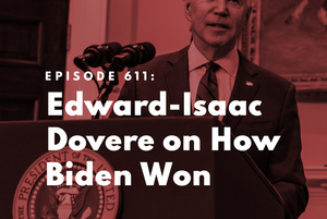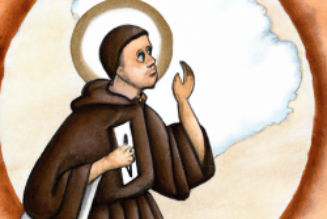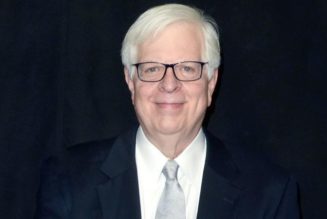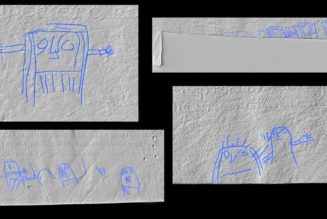 Question: On the feast day of the Nativity of the Blessed Virgin Mary, the Gospel reading is the genealogy of Jesus on Joseph’s side. It says Jesse was an ancestor of “Joseph, the husband of Mary.” But, in the Liturgy of the Hours, the first antiphon says “The Virgin Mary came forth from the root of Jesse.” But it was Joseph who came from the root of Jesse, and we know nothing of Mary’s genealogy except the tradition of Anne and Joachim being her parents. Also, since the genealogies of Jesus trace Joseph’s lineage, not Mary’s, why is this so since he was only a foster father not of his physical descent?
Question: On the feast day of the Nativity of the Blessed Virgin Mary, the Gospel reading is the genealogy of Jesus on Joseph’s side. It says Jesse was an ancestor of “Joseph, the husband of Mary.” But, in the Liturgy of the Hours, the first antiphon says “The Virgin Mary came forth from the root of Jesse.” But it was Joseph who came from the root of Jesse, and we know nothing of Mary’s genealogy except the tradition of Anne and Joachim being her parents. Also, since the genealogies of Jesus trace Joseph’s lineage, not Mary’s, why is this so since he was only a foster father not of his physical descent?
— Jeannine Aucoin, Concord, New Hampshire
Answer: The Church proclaims Mary’s descent from King David through sacred Tradition and the ancient liturgies.
Beyond this, it was the usual custom that marriages take place within tribes. So, if Joseph was the Tribe of Judah (David’s line), so was Mary.
However, Luke’s Gospel describes Elizabeth (a kinswoman to Mary) as belonging to the daughters of Aaron of the priestly tribe of Levi. Was then Mary of Levite heritage? But then again, the legal adoption of Jesus and marriage to Mary by Joseph would make Jesus and Mary members of the House of David (Judah).
This is fitting in that Jesus was born of Mary, of the priestly tribe of Levi, and adopted by Joseph, the royal tribe of David, since the Messiah is both priest and king. This theory however, is seemingly at odds with the Letter to the Hebrews, which roots Jesus’ priesthood in that of Melchizedek, not the Levitical priesthood.
Your question also touches on the purpose of a genealogy, which, for ancient Jews, was more complex and rich than to simply demonstrate physical descent. The modern science of genetics, chromosomes and the genetic code were unknown in the ancient world.
But even among us moderns, relationships are set up both by blood and by marriage — that is to say, two people can be related either by direct physical descent or “legally” through the marriage to others (today we use the term “in-laws”). And thus, while Joseph and Jesus shared no physical genes, Joseph’s family and Jesus are one through Joseph’s marriage to Mary. So, Joseph’s family tree matters to us and to those in ancient Israel because, through Joseph and his marriage to Mary, Jesus relates to many others in Israel.
In ancient Israel, genealogies existed to show that one was in fact a member of the nation of Israel. They located them in a particular tribe, and it also was to show their relationships with others. These are Matthew’s main purposes — namely, that Jesus belongs to the family of the Jews both as a son of Mary and through his relationship to Joseph, the husband of the Virgin Mary.
It was expected in ancient genealogies to trace them through the father. Hence, both Matthew and Luke use that approach, tracing through Joseph, not Mary.
In addition, your question points to a common assumption that genealogies in the ancient world were the equivalent of modern genealogies or genetic studies today. This is simply not true. Modern record keeping was unknown at the time.
Genealogies were also shortened by omitting names. For example, Matthew lists only three names for the 430 years of the Egyptian exile (Ezron, Aram and Aminadab). Surely there were more? On the other hand, there is a problem with the long life spans in the Old Testament. Adam is said to have lived to be 930 years old, Abraham 175, Moses 120, and David 70. Is this due to a different assessment of time or are these ages to be taken literally? The answer to this affects our understanding of the genealogies since a “generation” today is reckoned to be 40-50 years. But what was a “generation” in these ancient times with seemingly different lifespans?
Further, generational terms, such as “son of” and “father of,” were flexible in meaning, where “father,” “grandfather,” “forefather” and “son” could mean a direct offspring or even more vaguely a “descendant.”
So, as you can see, there is more than a question of physical descent involved in the recitation of ancient genealogies. Human beings relate in more than physical ways, but also through a complex network of relationships we call families, tribes and nations. The ancient genealogies reflect this and we ought not read them in a way that demands from them more than they propose to offer.
Msgr. Charles Pope is the pastor of Holy Comforter-St. Cyprian in Washington, D.C., and writes for the Archdiocese of Washington, D.C. at blog.adw.org. Send questions to msgrpope@osv.com.
Join Our Telegram Group : Salvation & Prosperity










